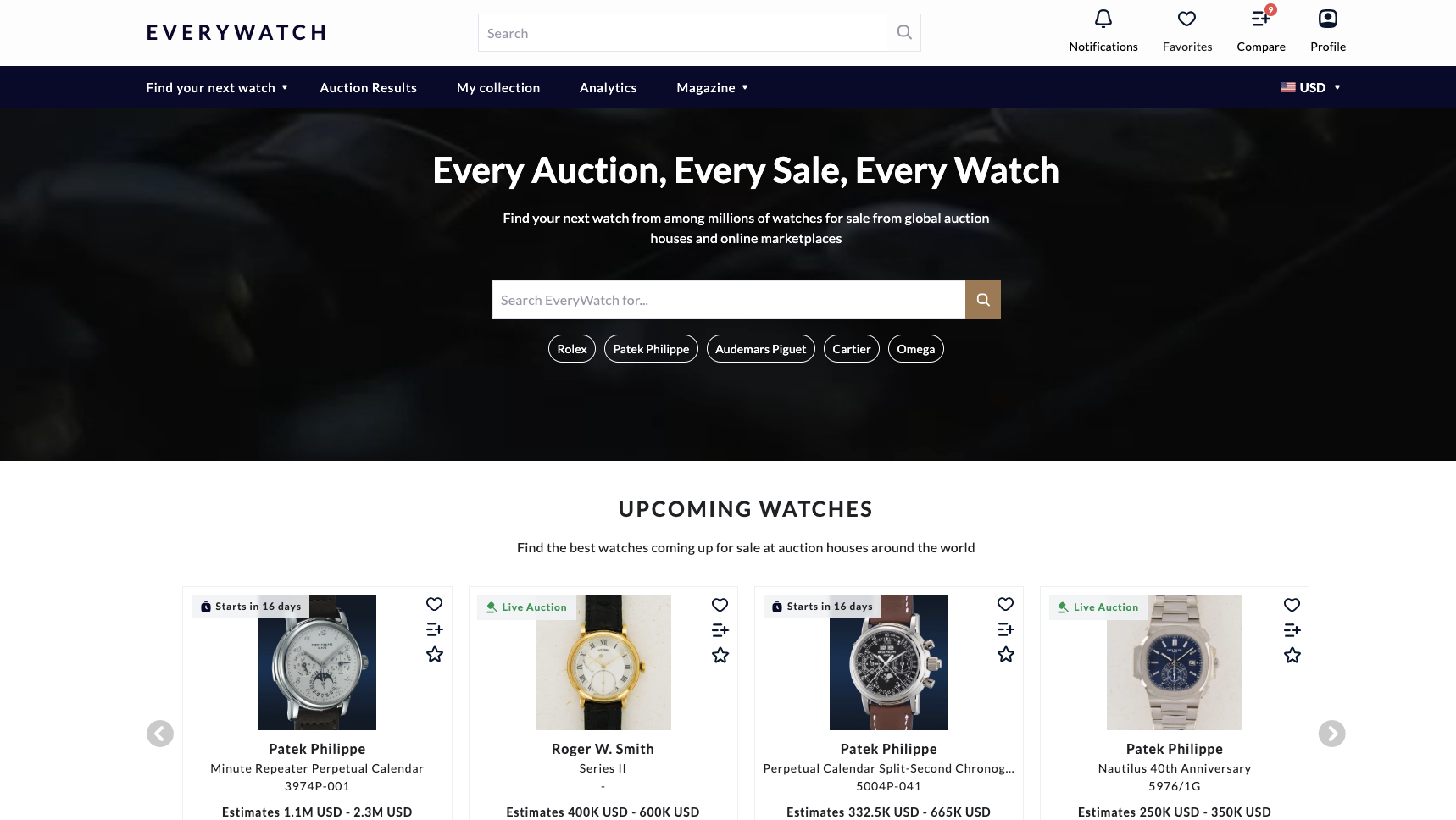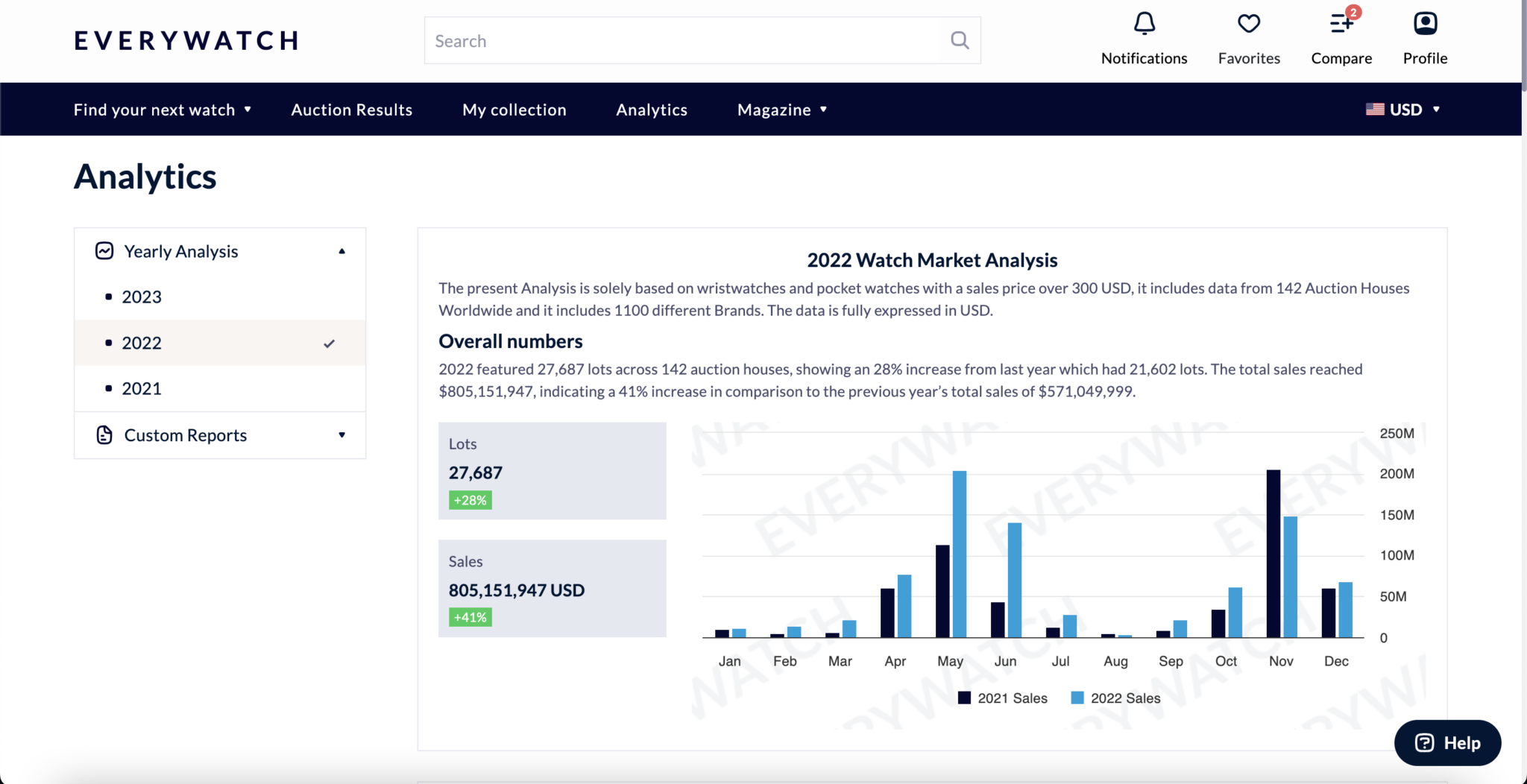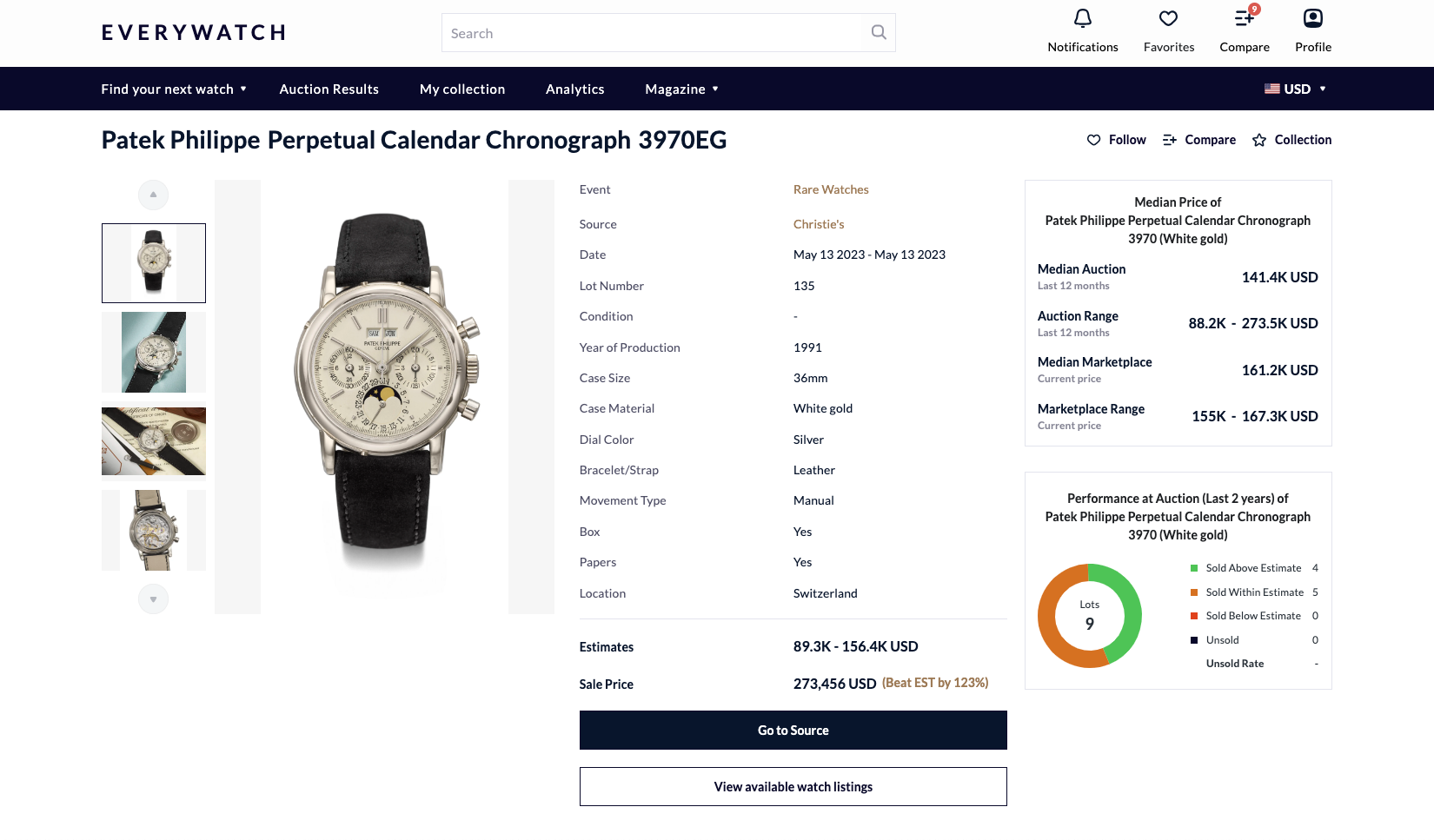The Swiss watch industry can trace its history back to the mid-16th century and, it is reasonable to say, its opacity has been a fundamental pillar of operations in all but the past few years.
Until very recently, you could not even find out the price of any new Rolex or Patek Philippe online, and that is still the case in some markets.
The web-based secondary market has brought much-needed transparency into supply (monitor the rise and fall of volumes on marketplaces) and demand (the speed watches sell is an indicator); and the immutable impact on prices of these market forces.
A major component of the secondary market is the auction world, which has also been dragged kicking and screaming into the light now that sales are almost all online, with pre-sale estimates available to be compared to hammer prices and attendant fees.
However, while there may be more available data than ever before, presentation — I might say manipulation — of that data has become an emerging industry in itself.
There are several reasons for this.
First, even with advanced bots crawling and scraping data from the web, that data is imperfect.
Among the challenges is the fact that much of the information comes from advertised prices on marketplaces like Chrono24.
This can give a false impression because deals are often done after negotiation, and the final transaction prices are not disclosed.
In addition, a large percentage of transactions are not completed on the marketplaces, but “offline” in stores, trade fairs and — most common of all — through WhatsApp.
It is reasonably easy to work out the true market value of commonly traded watches, but a bit of extra research is required on top of following the indexes and trackers that have cropped up recently.
This is easy to illustrate by comparing published auction results with the prices suggested by automated trackers.
A Steel Rolex Daytona ref. 116520 (white dial, steel bezel) has an estimated value of $34,102 on Chrono24.
But over at Watchcollecting.com, a UK-based site with global reach, the most recent hammer prices for this watch have been under $20,000.
Hang around the right WhatsApp groups and forums, and you will be offered examples for even less.
Trying to track supply on the secondary market as a way of predicting whether prices are likely to rise or fall in the future is just as problematic because so many marketplace listings are bogus.
Catch any grey market dealer in an unguarded moment and they will tell you they “sell pictures”. This is the practice of advertising watches that they do not own using pictures from manufacturers or other dealers.
If a customer approaches them to buy the watch, they go out to a network of other dealers to source it at a price that makes them a margin.
These problems with market data are then compounded by dealers and marketplaces spinning whatever information they have to their advantage; or by journalists writing sensationalized clickbait stories.
I’ll illustrate this with another recent example.
A story last week by Bloomberg was headlined: Rolex, Patek Prices Hit Fresh Two-Year Lows, and was based on data from the co-branded Bloomberg Subdial Watch Index (Subdial is a UK-based trading company).
It is true that the Index, which uses weighted averages of advertised watches and sales data from Subdial and other sources, was at a two-year low for these highly traded watch brands.
Rolex and Patek Philippe prices
However, a casual observer might have concluded that Rolex and Patek Philippe have been performing horribly over that period, when in fact they remain the best brands to invest in when compared to their retail prices.
References that have been on the most violent rollercoaster ride of prices have been discontinued pieces like the Audemars Piguet Royal Oak Jumbo and the Patek Philippe Nautilus 5711/1A.
The Royal Oak peaked at $138,000 in March 2022, and is now less than half that price at $64,000, according to the Bloomberg Subdial Index.
The Nautilus has slumped from $184,000 to $98,000 (and remember these prices are too high, for reasons explained earlier).
It is more informative to look at watches that are still in the Rolex catalogue, like the GMT Master II 126710BLNR, also known as the Batman with jubilee bracelet.
Bloomberg Subdial reports this watch peaked in price at just over $24,000 in April last year, and is now down to around $16,000.
That sounds like a catastrophic 33% fall, except that the retail price for the watch is $10,700+tax (average $11,500 with tax), so any example bought at an authorized dealer has an instant potential profit of $4,500.
Another example sheds even more light on how statistics and reporting can be misleading. An Omega Speedmaster Moonwatch might have been bought for $7,650 at the peak of the unicorn watch bubble in April last year. Today it is trading slightly higher at $7,800.
Does this mean the Batman was a bad bet and the Moonwatch a good one? Only if both had been bought on the secondary market.
If you buy a Moonwatch new from an Omega AD, it will cost $8,000+tax on a stee bracelet, so the secondary market price is slightly lower.
Bloomberg is right to say that Rolex and Patek prices have hit two-year lows (at least those tracked in its index), but is it right to give a customer who might only buy one expensive watch in their lifetime the impression that these apex brands are a bad buy?
EveryWatch
 Into this seemingly transparent, but murky world comes a new player this week: EveryWatch, which promises to provide “The exact (market) price of any reference; vintage or contemporary.”
Into this seemingly transparent, but murky world comes a new player this week: EveryWatch, which promises to provide “The exact (market) price of any reference; vintage or contemporary.”
A press conference at Dubai Watch Week gave a demonstration of the AI-assisted information platform, which is described as being as useful to professionals as it is to watch lovers for finding prices of more than 500,000 watch references that have been sold or advertised by more than 250 auction houses and 150 online marketplaces and dealers.
It is an impressive site, and a lot of fun to spend time with wandering through a maze of analytics and tools that have one aim in mind: to give subscribers, who are asked to pay $500 per year for the full service, the best possible information on historic, current and future price trends.
Davide Parmigiani, a world-renowned collector, dealer and chairman of Monaco Legend Auction House describes EveryWatch as “the epitome of efficiency”. Adding: “As auctioneers, we can now easily and quickly value watches and identify trends. And as a collector, I can now track the value of my full collection daily and also be notified when the watch I have been looking to buy for years comes on to the market.”
Much has been achieved, particularly with the aggregation of auction results, but it faces the same barriers to the truth to which all other indexes and trackers fall foul when it comes to marketplace data.
This is easily illustrated with our earlier example of the Rolex Batman ref. 126710BLNR.
You can ask for its current price based on auction results, and you get an estimate of $19,295, or a price based on marketplace results, which gives an estimate of $18,379.
You see the problem. Even EveryWatch’s own data on hammer prices shows four examples of the watch selling recently for under $15,000, about 25% below the headline price estimates.
To be fair, if you keep drilling into the data, you will find these individual sold prices for the Batman, so you can get to an informed view on current values and the trend in prices.
At launch, EveryWatch has chosen not to publish any sort of indexes based on aggregated data, a recognition, according to one its early investors, Alexander Friedman, that this sort of aggregation can lead to misleading results.
Marketing of the site highlights the artificial intelligence that it uses to give a picture of unrivalled accuracy, but I would like to see a subscription above the $500 per year offer that uses human intelligence.
Armed with the information already available with EveryWatch, an experienced trader will go that final mile to interpret what the data says and give an even more informed opinion on whether to buy, hold or sell any watch in your collection.



